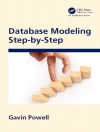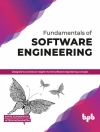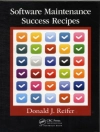This edited volume focuses on the latest and most impactful advancements of multimedia data globally available for environmental and earth biodiversity. The data reflects the status, behavior, change as well as human interests and concerns which are increasingly crucial for understanding environmental issues and phenomena. This volume addresses the need for the development of advanced methods, techniques and tools for collecting, managing, analyzing, understanding and modeling environmental & biodiversity data, including the automated or collaborative species identification, the species distribution modeling and their environment, such as the air quality or the bio-acoustic monitoring. Researchers and practitioners in multimedia and environmental topics will find the chapters essential to their continued studies.
สารบัญ
1 Introduction.- 2 Developing mobile applications for environmental and biodiversity citizen science: considerations and recommendations.- 3 A toolbox for understanding and implementing a citizens’ observatory on air monitoring.- 4 A Real-Time Streaming and Detection System for Bio-acoustic Ecological Studies after the Fukushima Accident.- 5 Towards improved air quality monitoring using publicly available sky images.- 6 Traits: Structuring species information for discoverability, navigation and identification.- 7 Unsupervised Bioacoustic Segmentation by Hierarchical Dirichlet Process Hidden Markov Model.- 8 Plant Identification: Experts vs. Machines in the Era of Deep Learning.- 9 Automated identification of herbarium specimens at different taxonomic levels.- 10 A deep learning approach to species distribution modelling.- A Existing Data and Metadata Standards and Schemas related to Citizen Science.- B Creative Commons (CC) and Open Data Commons (ODC) Licenses.- C List of Apps, Platforms and their Functionalities in Citizen Science Projects.- D Examples of Symbolic and Non-symbolic Rewards in Citizen Science Projects.- E List of Apps for Sonic Environment and Noise Pollution Monitoring.












